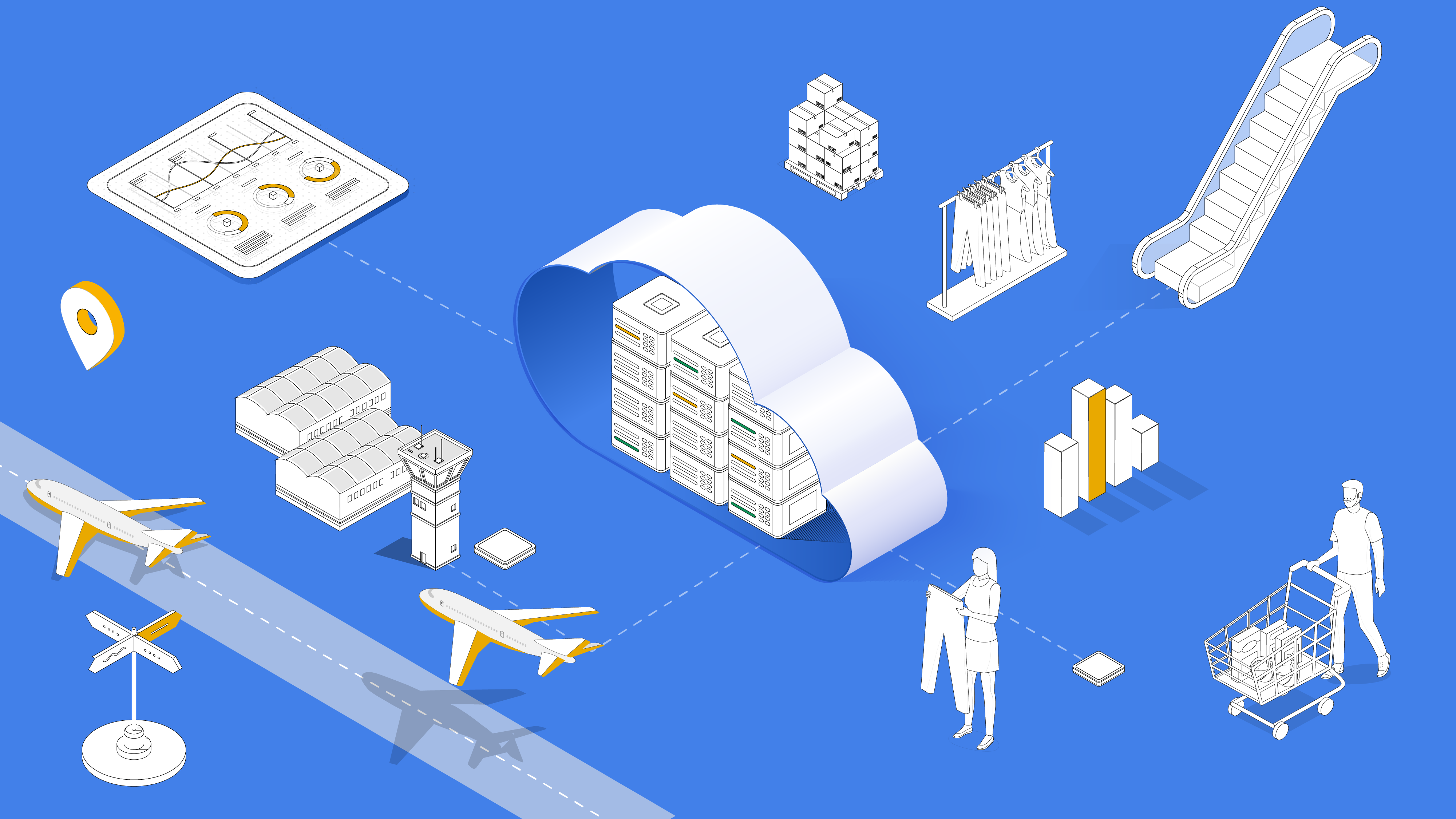Switzerland has a notorious wind called the Bise. A fast-moving current of dry air squeezed between the mountain ranges of the Jura and the Alps, the Bise can bring cold air and ice to the Swiss plateau – along with flight delays and cancellations. At Zurich airport, for example, a strong Bise can force air traffic controllers to switch runways and reduce arrival capacity by almost a third. Such changes cause major headaches for airlines, which must manage both their fleet of aircraft and the complaints of angry passengers.
The airline Lufthansa has turned to technology for a solution. It can’t stop the wind blowing, but it does use Google Cloud to better forecast when the Bise will strike, and to plan its flight operations accordingly. “Now we can predict how long the Bise will last, how strong the winds are and the capacity limitations we expect for this timeframe, and so we can accurately predict the impact on our flight operations,” says Christian Most, Project Lead for the Lufthansa Group’s OPSD, or Operations Decision Support Suite.
Google Cloud ML forecasting allows airlines to increase the number of on-time flights. In Zurich Airport, in particular, the Bise can reduce capacity by up to 30 per cent, leading to flight delays and cancellations, and to millions in lost revenue for Lufthansa (as well as dissatisfaction among their passengers). Google Cloud technology has enabled the airline to improve the accuracy of flight landings by 40 per cent.
Flight connections
OPSD is a cloud-based operational planning tool that integrates data from core systems that run aircraft rotation, passenger management, crew management and technical fleet management. It was initially introduced to the Lufthansa Group subsidiary Swiss International Air Lines (SWISS), and is now to be rolled out across the entire group.
This technology does more than forecast the weather. It helps passengers catch their flights, for example, and cuts their carbon footprints as it does so. The OPSD collates data about aircraft maintenance, passenger bookings, routes and cargo, so the team can determine which aircraft is ideal for a particular route, considering all available live data. The efficiencies gained from these decisions, even in small numbers, add up to significant savings and help the company to reduce emissions.
“When we uncover an opportunity to improve sustainability, this is where the magic happens,” says Most. “If you have multiple factors to weigh against, you will ultimately see a benefit for operations, for the customer and for your costs. Improving sustainability comes with many advantages for other factors.”
In the first 18 months of the Google Cloud project, SWISS saved more than 10,000 tons of carbon dioxide emissions and at least 5mn Swiss francs.
Helping shoppers
Another initiative co-created with Google Cloud is Carrefour’s produce assortment solution. “We’ve been around for more than 60 years, and Carrefour’s IT infrastructure reflected our age and history,” says Nicolas Forgues, Executive Vice President and Chief Technology Officer at Carrefour. “To be able to scale rapidly, provide our customers with even better services and remain agile as we continue to grow, we had to simplify our landscape. That’s why we decided to move to the cloud.”
The switch paid off. The cloud enables local store directors to better regulate produce orders according to their needs. This reduces food waste while giving shoppers timely access to the right items. “Our digital transformation is part of our mission to make healthy, sustainably produced food available to everyone,” he adds.
Supply Chains
Logistics and supply chains are other areas ripe for a digital makeover to improve sustainability. Google Cloud has introduced technology that lets companies build a virtual representation of their physical supply chain. By collating data from sources including suppliers and inventories, the tool can provide real-time dashboards, advanced analytics, and alerts on critical issues like potential disruptions. This visibility helps to prevent retail stock-outs, ageing manufacturing inventory and weather-related disruptions.
Renault are innovating on how to run efficient supply chains. “Improving visibility to inventory levels across our network is a key initiative,” said Jean-François Salles, Supply Chain Global Vice President at Renault Group. “We aim to work with Google tools to manage stock, improve forecasting and eventually optimise our fulfilment.”
The experience of Renault and other firms show that planning, optimisation and visibility are essential to succeed in the modern business world. And for that, data is key.
